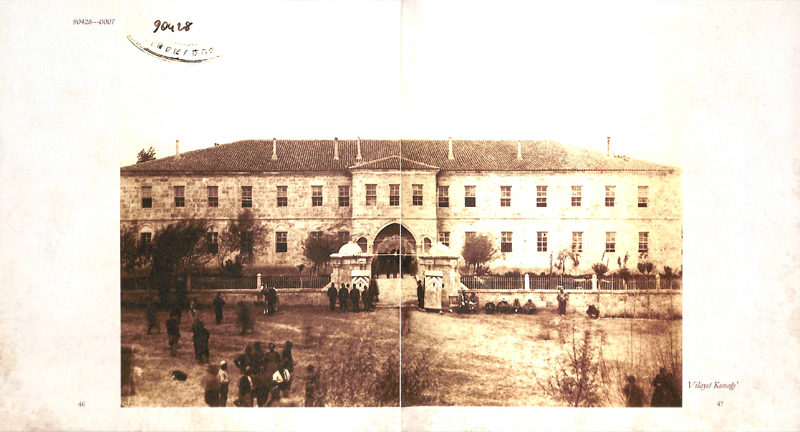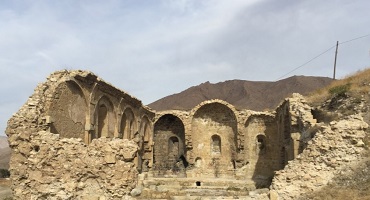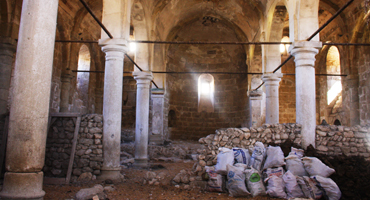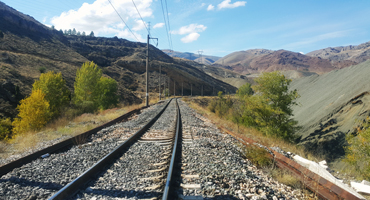It is no coincidence that we start our “From the Library of Hrant Dink Foundation” series with the books on Sivas. Having an important position in Armenian culture and history, Sivas is also the hometown of many of the Armenians living in Turkey and around the world. Sivas is a large city and the wide area constituting Sivas today has a cultural and spatial variety and plurality. People of Gemerek, Gürün, Hafik, Zara, Divirig, Pırkınik and of course the ones from the city center. We cannot say that the collection of Sivas books in the Library of Hrant Dink Foundation is complete, but we hope that the books available in the library would serve as an extensive research opportunity for the users.
Armenians had been living in Sivas for a long time and they always had close relations with the neighboring peoples. This information is included in the back cover of ‘Sebastia/Sivas and Lesser Armenia’ by Richard Hovhannisian, which is a compilation of his conference presentations (Mazda, 2004). Aras Publishing started to translate these conference series to Turkish this year. Muş and Bitlis presentations are published and already on our library shelves.

Zaralı yazarlardan
Another reason for choosing Sivas for this month is the renovation and re-sanctification of the Armenian cemetery in Zara. A group of Armenians from Zara living in Istanbul went to the opening ceremony of the cemetery. Though there are no Armenians living in Zara today, new writers are born among Armenians of Zara: ‘Zara’lı Terzi Vartanuş’un Anıları’ (Memoirs of Vartanuş, A Tailor from Zara) is written by Vartanuş’s son Avedis Olgun (published by himself, 2016). Another writer from Zara is Krikor Ceyhan. Born in Zara in 1926, Krikor Ceyhan passed away in Germany in 1999. We have three series in our library: ‘Kapıyı Kimler Çalıyor’ (Who is knocking on the door) (Belge Publishing, 1999), ‘Atını Nalladı Felek Düştü Peşimize’ (Fate Chasing us with its Horse) (Aras Publishing, 2. edition, 2000) and ‘Seferberlik Türküleriyle Büyüdüm’ (I grew up with the Songs of Campaigns) (Aras Publishing, 3. edition, 2008). ‘Çileli Ağavni’ (Suffering Ağavni) is written by Hraç Norşen (Aras Publishing, 2. edition, 2011) and it tells the story of Ağavi Norşen and Pürk village in Suşehri province.
Huşamadyans *memory books), are being re-published by Holy See of Cilicia Publishing House. 7thof the series is ‘Batmakirk Gürini’ (Book of History of Gürün) and it is published in 2014. The first edition of this book, which was published in Beirut in 1974 by Bedros Misanyan, is impossible to find today. Speaking of Gürün, we have to mention Antranik Dzarugyan, who was born in Gürün and raised in orphanages in Aleppo; he is one of the most important figures in Armenian literature in diaspora. Dzarugyan’s work titled ‘Tught Ar Yerevan’ (Letter to Yerevan) is about the relation between a person from diaspora and Armenia (Hayrenik Publishing, 1954).
Stories from the Center
Coming back to the city center of Sivas, we see Serpil Sönmez Yılmaz’s research titled ‘Osmanlı Klasik Çağında Sivas’ (Sivas in the Classical Ottoman Period) (Kitabevi, 2012). Majority of the work covers the Christian population structure of Sivas in 15th and 16th centuries and their relationship with the state. Coming to 17th century, we see that Wilhelm Köhler mentions the people of Sivas in his work titled ‘Evliya Çelebi Seyahatnamesi’nde Bitlis ve Halkı’ (Bitlis and its People in Evliya Çelebi’s Book of Travels). Çelebi started to write about his 5-year journey to Caucasus with Sivas (trans: Haydar Işık, Alan Publishing, 1989). The main content of ‘Sivas 1877’ compiled by Arsen Yaman is the patriarchate report written by Priest Boğos Natanyan in 1877. The book also includes the Sivas section of Toros Aghpar book of travels written by Karekin Sırvantsdyants in 1879 (Birzamanlar Publishing, 2008). Portraying Sivas with photos starting from 19th century, the photo-book ‘Sivas’ın Resmi: En Eski Fotoğraflarıyla Bir Şehrin Hikâyesi’ (Picture of Sivas: Tale of a City with its Oldest Pictures) is edited by Ahmet Turan Alkan.

Lastly, let us talk about two clergymen from Sivas. ‘Aziz Vlas: Uluslararası Üne Sahip Sivaslı’ (Saint Vlas: A Person from Sivas Known Worldwide) is written by Arman Çuhacıyan and it is about probably the most famous person from Sivas. It is the story of ‘Vlas of Sebaste’, Surp Parseğ for Armenians, who lived in 3rd-4th century AD and is worshiped in a large area from America to Russia (Aras Publishing, 2004). Another person from Sivas is Mekhitar of Sebaste. You can find many of books in the Library of Hrant Dink Foundation that are published by Catholic Armenian Mekhitarist Order, which was established in Venice by Mekhitar of Sebaste from Sivas. The oldest one is a classical Armenian edition of Odyssey by Homer, published in 1843 in Venice.




